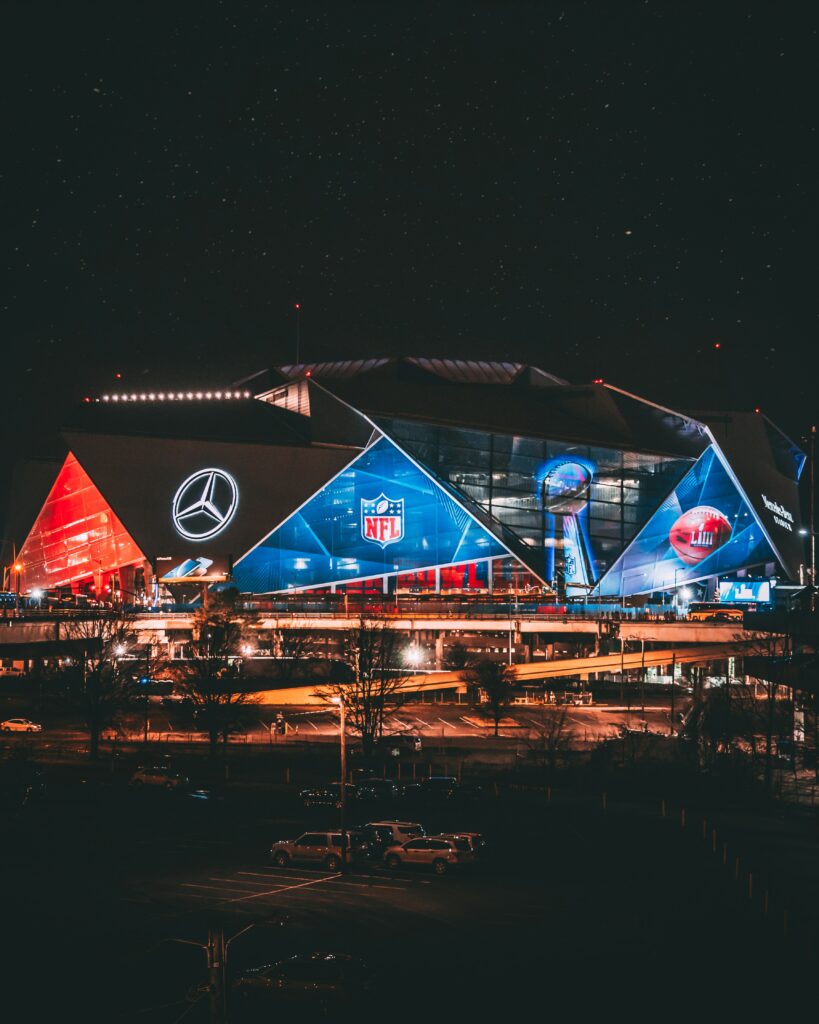8 Energy Usage Facts About the Super Bowl and the NFL
In a league that has been around for over 100 years, people all over the globe look forward to one event every single year – The Super Bowl – As we look forward to Sunday night when Patrick Mahomes will lead the Kansas City Chiefs against Brock Purdy and the San Francisco 49er’s. The Super Bowl has become one of the largest productions as we see ticket prices rise to $10,000+, halftime shows that surpass the showmanship of a concert, and celebrities from all over the world, all at one event. As we prepare for the Super Bowl, let us look at 8 interesting facts about energy in the NFL and the Super Bowl.
1. Super Bowl 51 used 75.5 GWh of energy, or $25 million worth.
How much is 75.5 Gigawatts of energy? It is enough to supply the whole kingdom of Morocco for 10 hours. A gigawatt is equivalent to one million watts. According to calculations done by Williams Company, the lightbulbs in our homes are roughly 60-100 watts, which means that 1.21 Gigawatts can power over 10 million lightbulbs.
2. Last year's Super Bowl at Levi's Stadium was Net Zero with emissions.
When you look at how much power a stadium uses for a Super Bowl you start to look at terms in the millions and billions, which makes this feat all the more impressive. While this wasn’t an NFL mandate, it was cooperation from the stadium managers and operators to conserve energy and save money. Levi’s Stadium is the first NFL stadium to receive LEED Gold Certification and it did this by featuring nearly 20,000 square feet of solar pannels.
3. Household energy usage drops by ~5% on Super Bowl Sunday.
With all of the watch parties happening across the nation, you may be surprised that the average home energy usage drops 5% on Super Bowl Sunday. This is due to the fact that people are sharing screens rather than watching separate tv’s in other rooms. This energy conserving practice leads to a reduction in residential energy usage during the Super Bowl.
4. American viewers spend up to $10 million on energy to watch the Super Bowl.
By looking into the average viewership of the Super Bowl, and then multiplying the average tv consumption and the light consumption within a home, viewers spend roughly $10 million on energy just to watch the Super Bowl.
5. Super Bowl LVIII will be hosted with 100% renewable energy.
This years Super Bowl will be hosted in Las Vegas, Nevada, at Allegiant Stadium which is home of the Raiders. The game taking place on Sunday will be the first Super Bowl in history that is powered 100% by renewable energy. When the stadium was being built, the Raiders opted into a 25-year power purchase agreement that provides Allegiant Stadium with 100% renewable energy.
6. 23% of NFL Stadiums use Solar Energy to some degree
The average NFL Stadium uses 10 megawatts of energy throughout the length of a football game. That doesn’t count people driving to the stadium, people watching at home on their TV’s, or anything other than the Stadium’s consumption. Hearing this, we can see why it’s so important for the NFL to do it’s best to stay green. As of 2024, we now see that 23% of NFL Stadiums are utilizing renewable energy such as solar power.
7. Fantasy Football contributes to high consumption
In a 2022 study, it was found that Fantasy Football Managers spent around 1.3 billion minutes on fantasy football last year. Using the average computer consumption, it is estimated that fantasy football uses over 1 billion watts of energy per year.
8. Major sports account for 122,000 metric tons of CO2 from air travel alone.
The 4 major sports in America (Hockey, Baseball, Football, & Basketball) account for over 122,000 metric tons of CO2 per year, in air travel alone. As you can see in a professional season, each team travels across the country and thousands of miles per year. Adding this up, that’s a lot of carbon.
